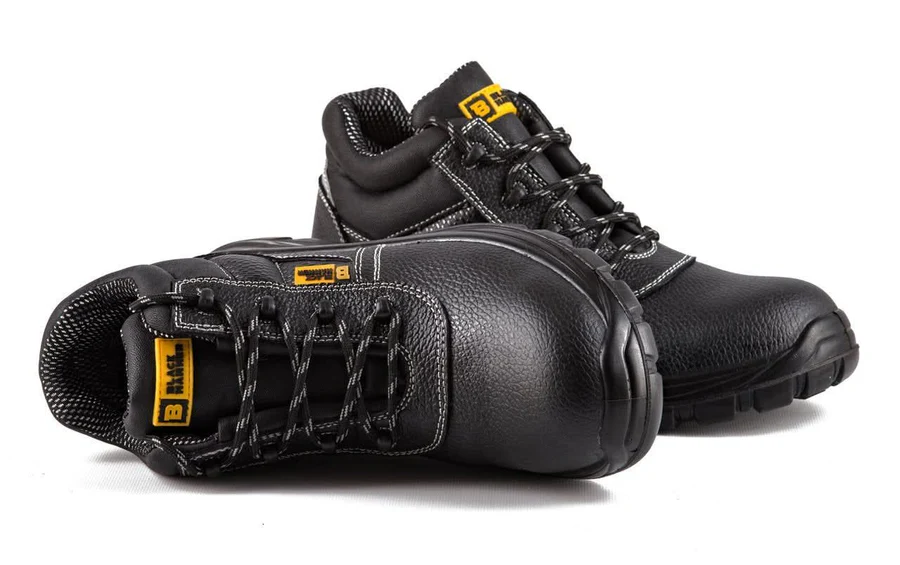After a long day on site, few things are more frustrating than peeling off a pair of soaking wet safety boots. For those of us working outdoors in the UK, such as construction workers, tradespeople, and anyone braving the damp winter wet boots aren’t just uncomfortable, they’re a serious problem. Damp footwear can shorten boot lifespan, cause odours, and even affect foot health. At Black Hammer, we understand the importance of keeping boots dry without ruining their structure. That’s why we’ve put together this detailed guide on the do’s and don’ts of drying safety boots without damaging them.
By the end, you’ll know safe drying techniques, what to avoid, and how proper boot care boosts both comfort and durability.
Why Proper Drying Matters
Wet boots are more than a minor annoyance—they can impact your health, comfort, and wallet.
- Health Risks: Damp linings encourage bacteria and fungi to grow, which may lead to infections such as athlete’s foot. Constant exposure to moisture can also increase the risk of blisters and cold-related issues in winter.
- Safety Concerns: Boots designed to protect your feet can fail if adhesives weaken or toe caps warp due to poor drying practices.
- Financial Impact: Safety boots are an investment. Replacing them too often because of preventable damage is costly. Proper drying extends their working life, saving you money over time.
The Do’s of Drying Safety Boots
Using safe methods is the best way to preserve both comfort and durability.
Do Air-Dry Whenever Possible: Air-drying is the most reliable approach. Place your boots in a dry, ventilated space at room temperature. Good airflow helps moisture escape without damaging the material.
Do Use Absorbent Materials Inside: Stuffing your boots with newspaper or paper towels is a simple and effective trick. These materials pull moisture out from the lining. For heavy water exposure, replace the paper every few hours until dry.
Do Use Boot Trees or Absorbent Inserts: Boot trees keep the structure of the boots intact while aiding drying. Some inserts, especially cedar ones, also absorb moisture and neutralise odour, keeping your boots fresher for longer.
Do Remove Insoles and Laces: Moisture hides inside insoles. By removing them, you allow air to circulate more freely. Untying or removing laces also loosens the structure, helping boots dry faster.
Do Rotate Boots: If your boots regularly get wet, keep a second pair. This way, you’ll always have one dry pair ready for use while the other is drying completely.
The Don’ts of Drying Safety Boots
Just as important as knowing the right way is avoiding the wrong methods.
Don’t Use Direct Heat Sources: Avoid placing boots on radiators, near space heaters, or using hairdryers. Intense heat can dry materials too quickly, leading to cracks and warped adhesives.
Don’t Leave Boots in Direct Sunlight: While sunshine may seem harmless, prolonged exposure can fade colours, dry out leather, and weaken materials.
Don’t Use Fireplaces or Ovens: Some workers try extreme methods such as putting boots by open flames or in ovens. This is unsafe and will irreversibly damage your boots.
Don’t Wear Them Damp: Even if the outside seems dry, the inside may still hold moisture. Wearing damp boots can create odours, increase friction on your feet, and lead to discomfort during long shifts.
Safe vs Unsafe Drying Methods
Not all drying methods are equal. Some preserve your boots, while others cause lasting damage.
|
Drying Method |
Safe or Unsafe? |
Why |
|
Air-drying at room temp |
Safe |
Gentle, preserves material quality |
|
Stuffing with newspaper |
Safe |
Absorbs moisture, prevents damp smell |
|
Using boot dryer (low heat) |
Safe |
Designed for boots, maintains structure |
|
Placing on radiator |
Unsafe |
Causes cracking, damages adhesives |
|
Leaving in direct sunlight |
Unsafe |
Dries unevenly, fades material |
|
Oven or fire |
Extremely Unsafe |
Warps, burns, destroys materials |
|
Airing cupboard (low heat) |
Caution |
Can work if indirect, but monitor to avoid overheating |
This table highlights the importance of choosing safe, gradual methods over quick fixes.
Drying Tips for Different Boot Materials
Different boot materials respond differently to moisture. Adjust your approach depending on the type.
Leather Safety Boots: Leather is durable but sensitive to heat. Always dry leather slowly at room temperature. Once fully dry, apply a conditioning balm or wax to restore natural oils and prevent cracking.
Suede Safety Boots: Suede requires gentle care. Use a suede brush to clean mud before drying, then air-dry with paper stuffed inside. Heat will harden suede and ruin its texture.
Waterproof Synthetic Boots: Synthetic boots are more water-resistant, but heat can still damage adhesives and seams. Use absorbent inserts or silica gel packs inside. Reapply waterproof spray after several wettings to keep protection strong.
How Proper Drying Helps Comfort and Durability
Drying your boots correctly doesn’t just save them—it also improves your daily comfort and performance.
Comfort Benefits
- Reduces risk of blisters from damp friction.
- Keeps feet warm during long winter shifts.
- Minimises odour build-up for better workplace confidence.
Durability Benefits
- Maintains leather flexibility and prevents cracks.
- Protects adhesives and stitching from breakdown.
- Keeps waterproof membranes effective.
- Preserves the structure of reinforced toe areas.
Quick Hacks for Faster Drying (Without Damage)
Sometimes you need boots dry sooner rather than later. Here are safe tricks:
-
Fan drying – Position boots in front of a fan to circulate air.
-
Newspaper method – Replace wet paper regularly for consistent absorption.
-
Silica gel packs – Place multiple packs inside to pull out moisture.
-
Towel wrapping – Wrap boots in a dry towel to draw out surface water before air-drying.
-
Specialist boot dryers – A worthwhile investment if wet boots are a frequent issue.
Preventing Wet Boots in the First Place
While drying methods are important, prevention reduces the problem altogether.
- Apply waterproofing sprays regularly to leather or fabric boots.
- Choose waterproof styles designed for tough conditions—explore waterproof safety boots for long-lasting protection.
- Wear moisture-wicking socks to limit sweat build-up inside.
- Use overshoes in heavy rain or muddy sites to shield boots from excess moisture.
- Store boots correctly in a dry, ventilated space. Avoid leaving them in damp garages or sealed bags.
Common Drying Mistakes to Avoid
Many workers unintentionally damage their boots when trying to dry them quickly.
- Forgetting to remove insoles, which remain damp longer than the outer shell.
- Drying only the outside, leaving the lining wet.
- Overusing waterproof sprays, which can block natural breathability.
- Skipping conditioning after drying leather boots.
- Storing damp boots in a pile, encouraging mould growth.
By avoiding these mistakes, you extend both the comfort and working life of your boots.
Conclusion
Dry isn’t just about comfort — it’s about safeguarding the gear that protects you. Wet boots can spoil your day, harm your feet, and reduce the lifespan of your footwear. Follow these do’s and don’ts for drying safety boots without causing damage. By following these do’s and don’ts of drying safety boots without damaging them, you’ll preserve your investment, stay comfortable, and keep your boots working as hard as you do.
At Black Hammer, we’re dedicated to helping workers across the UK find durable, reliable, and weather-ready safety boots. Care for them properly, and they’ll look after you in return.
Need more boot care advice or ready to explore long-lasting safety footwear? Contact us today—our team is here to help you choose boots built for UK conditions.

